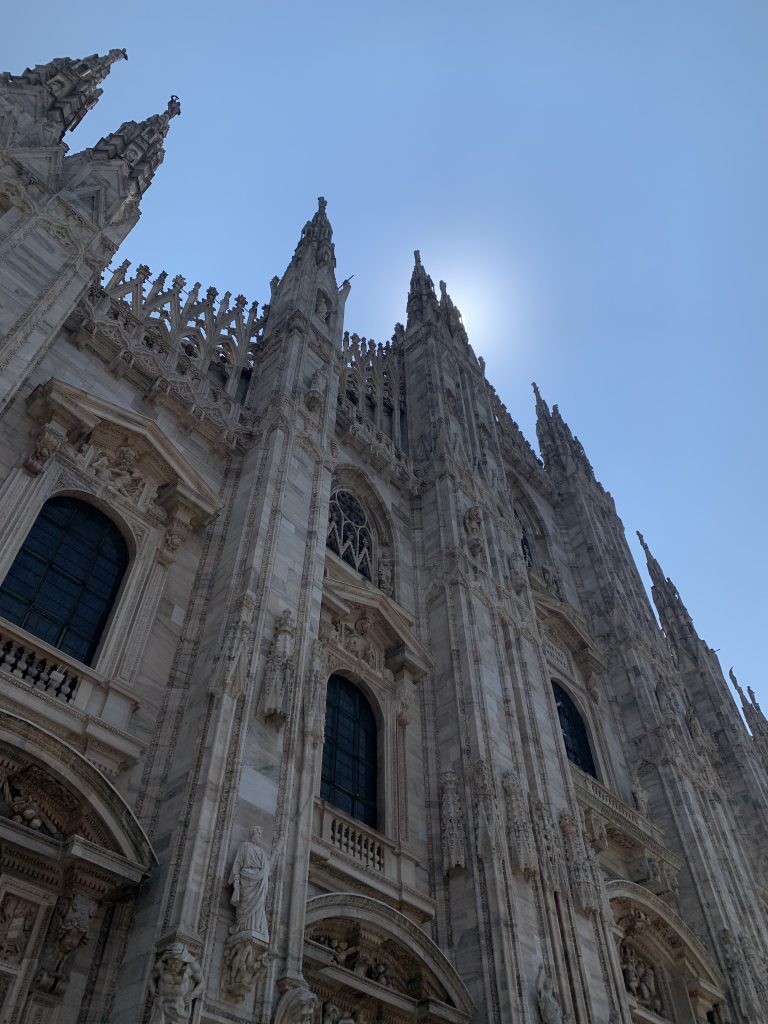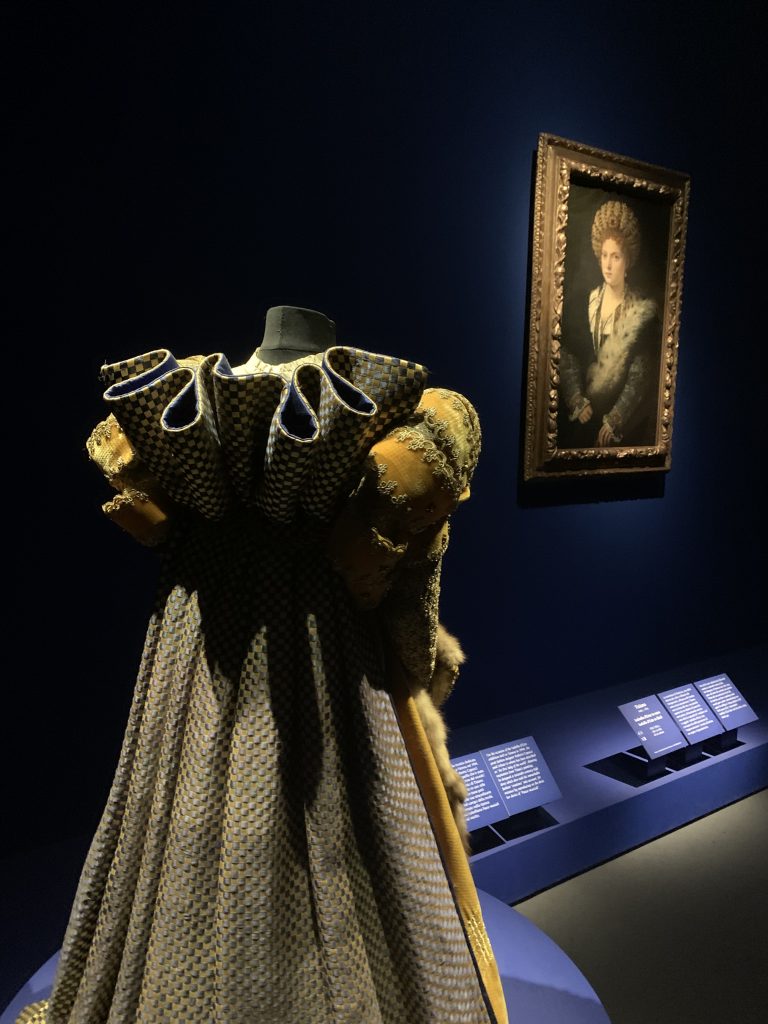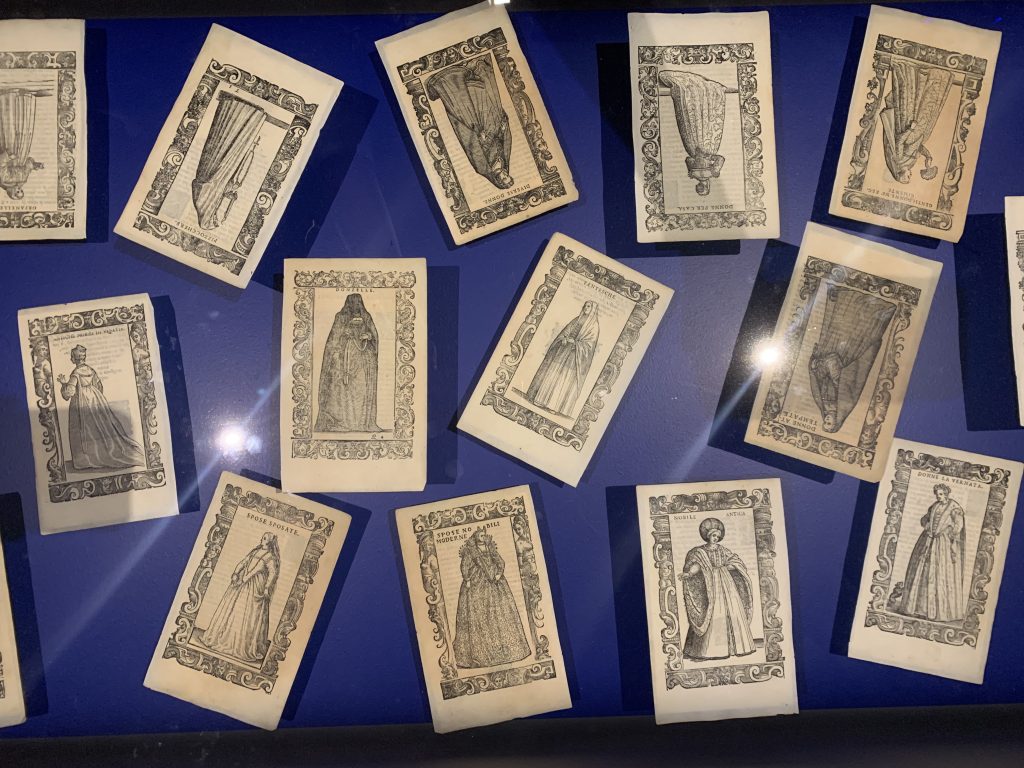
We emerged from the depths of the Milan metro, covering our eyes as the sun shone through the opening at the top of the stairwell. Armed with masks and an apocalyptic supply of water, we had come prepared to take on the masses in the winding subway tunnels and sweltering piazza. Even for seasoned visitors to this bustling Italian city, the sight of the cathedral emerging out of nowhere, taking up the entire view from the metro’s exit, is awe-inspiring. We quickly tore away from the sight of bright, white spires piercing into the cloudless blue sky, making a beeline to the Palazzo Reale on the south side of Piazza Duomo.
The purpose of our day trip to Milan was a visit to a blockbuster exhibition at the royal-palace-turned-museum: Tiziano e l’immagine della donna nel cinquecento veneziano (or, Titian and the Image of the Woman in 16th Century Venice). As a self-proclaimed student of art in the Italian Renaissance, focusing specifically on northern Italian city-states such as Venice and Ferrara, I was not about to miss the opportunity to see this exhibition. That morning I dragged my aunt and sister out of bed at 5:00 AM so we could catch a train to Milan. Was it worth it?
Born out the research of art historian Sylvia Ferino-Pagden, Director of the Picture Gallery at the Kunsthistorisches Museum, this exhibition purports to explore the representations of Venetian women in secular portraits. While Titian is undoubtedly one of the most celebrated and widely studied artists from sixteenth century Italy, the role of women as subjects and models in his works still inspires varied and sometimes heated debates, relating especially to the abuse or exploitation of women in his mythological poesie. Created in collaboration with the Kunsthistorisches Museum in Vienna, the exhibition took place from February 23rd to June 5th, 2022. The Kunst put on its own version of the show, titled “Titian’s Vision of Women: Beauty, Love, and Poetry,” which ran from October 5th, 2021, to January 30th, 2022.
During my time at Tufts, I have grown increasingly interested in how museums and exhibitions of Italian Renaissance art can break free of the traditionalism that so often dominates them in order to become more accessible, engaging, and inclusive. Being born and raised in Italy to museophile parents, museums have always been a central part of my life. Once moving to the United States, I quickly became aware of the stark difference in how American and Italian institutions approach the display of their collections, especially surrounding the art of the fifteenth and sixteenth centuries in Italy. As such, I was pleasantly surprised when the Italian exhibition I was so excited to see this summer engaged with their works in a refreshingly new manner.

Background: Titian, Portrait of Isabella d’Este, 1534-6. Oil on canvas, 102.4 x 64.7 cm. Vienna, Kunsthistorisches Museum.
Shortly before this visit, I had brought my younger sister to a few other Italian museums, where we had traipsed through a much more traditional museum experience. I had suffered through large, mostly empty rooms with seemingly never-ending wall texts that made it difficult for anyone, including an art history student genuinely interested in the subject, to remain actively engaged. I could see my sister grow ever more restless, and I couldn’t blame her. At the Milan Titian exhibition, however, I watched as she hopped from work to work, taking time to absorb each one and read the wall text, occasionally approaching my aunt or I to ask questions. I, too, found it easier to focus on the exhibition even as we reached the final rooms and my feet began to ache. Beyond the fascinating subject, the curators used multiple strategies to bring together different mediums and draw visitors’ attention to different aspects of the works on display. A dress titled “Homage to Isabella d’Este” was placed facing her famous portrait, emphasizing the richness of the fabric and jewels. The way the painted subject and dress were angled placed them in conversation with each other, asking viewers to consider them in conjunction. A different room instead placed a table in the center, filled with pages from Cesare Vecellio’s De gli habiti antichi et moderni… The Venetian women depicted here ranged wildly in status and wealth, depicting a wide variety of costumes. The pizzochere (lay, religious women), noblewomen, orfanelle, and fantesche (female domestic servants) reveal the styles of women we might otherwise not see in the portraits of upper-class women represented throughout the exhibition. Yet another room allows visitors to connect he paintings adorning the walls to contemporary literature, including Moderata Fonte’s Il merito delle donne (The Worth of Women). By including Fonte and other female authors, highlighting them by allotting a single, separate wall text to their works, the exhibition corrects an unfortunately common misconception that women did not contribute to the literary culture of the Renaissance. This is all explored further in a beautiful exhibit catalogue that includes stunning details and high-quality reproductions set against important essays that expand the field’s understanding of women in Titian’s oeuvre.

As much as I enjoyed the show and catalogue, there were still several instances where I thought the exhibition could have benefitted from a more accessible and innovative approach. This can be seen especially when comparing the exhibition pages for the Palazzo Reale exhibition and its counterpart at the Kunst. Including only a quick description and basic information on the organizers and museum hours, the Palazzo Reale does not provide much information for prospective visitors or for those wishing to revisit the show after their visit. When clicking on the Kunst’s page, we can immediately see a much more interactive and informative website, beautifully designed. Clickable text is paired with videos and sign-language translations, and various images from the show are reproduced digitally alongside short text descriptions. The page is also divided into several sections, including “The Mirror as an Instrument of Complex Visual Connections and a Means of Self-Awareness,” “United Forever: In Love for Five Centuries and Still Together,” “Sex Object and Goddess: Men Writing about Women,” and “Women Writers, Poets and Poet-Courtesans Ensure that Both They and Women in General Have a Voice.” As can be seen here, the Kunst exhibition appears to deal much more directly with issues of the use of women’s bodies in the male-dominated art industry in Renaissance Venice than the Milan sister show, at least for casual viewers who do not attentively read the exhibition catalogue.
In spite of these issues, I still thoroughly enjoyed the exhibition. I was glad to see my sister engage with this show with so much more excitment than in our previous museum visits. The conversation around the representation of women in Titian’s works is always a fascinating one, and this show proved that there are many fruitful studies to come in this field. I can say with certainty that the 5 AM alarm was worth it.
Glad to hear the are signs of progress in Italian Museums!